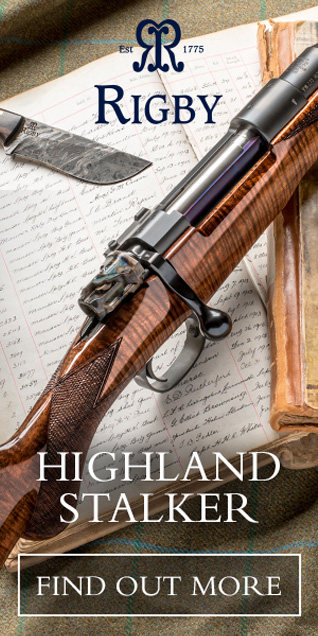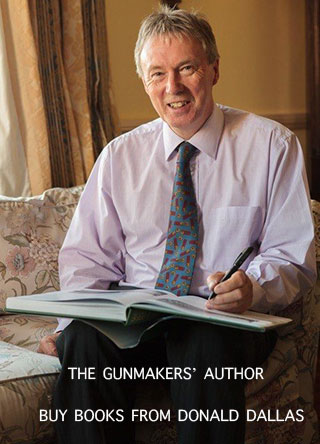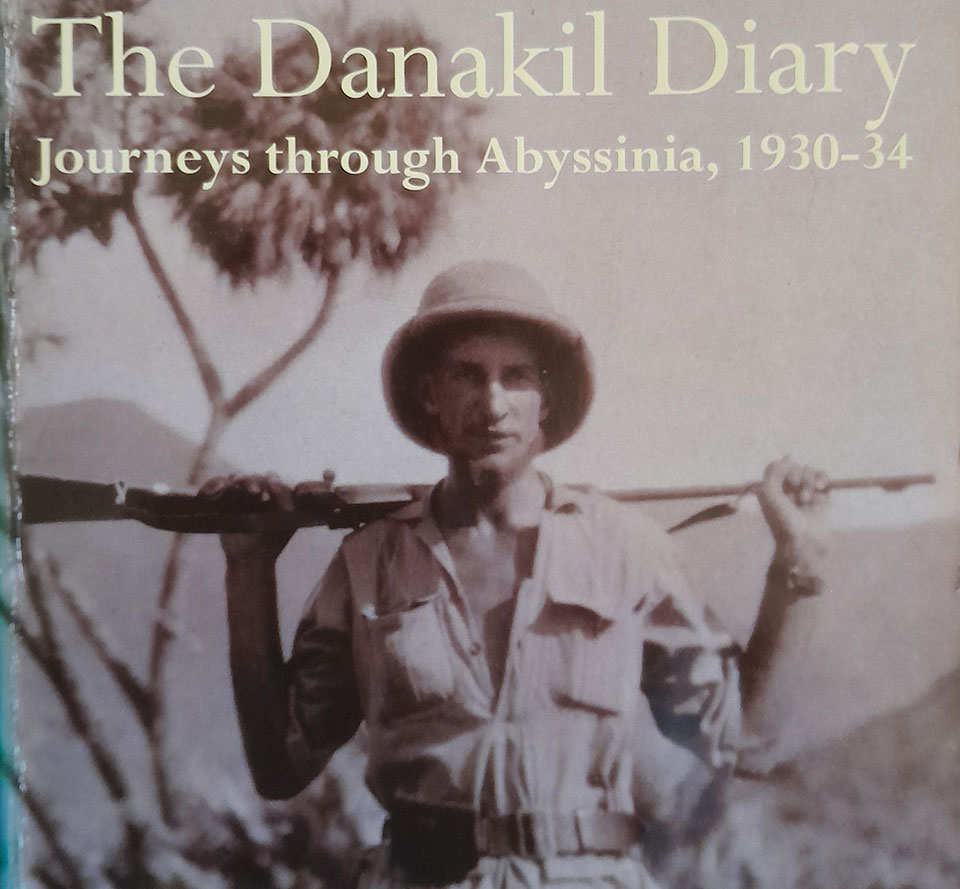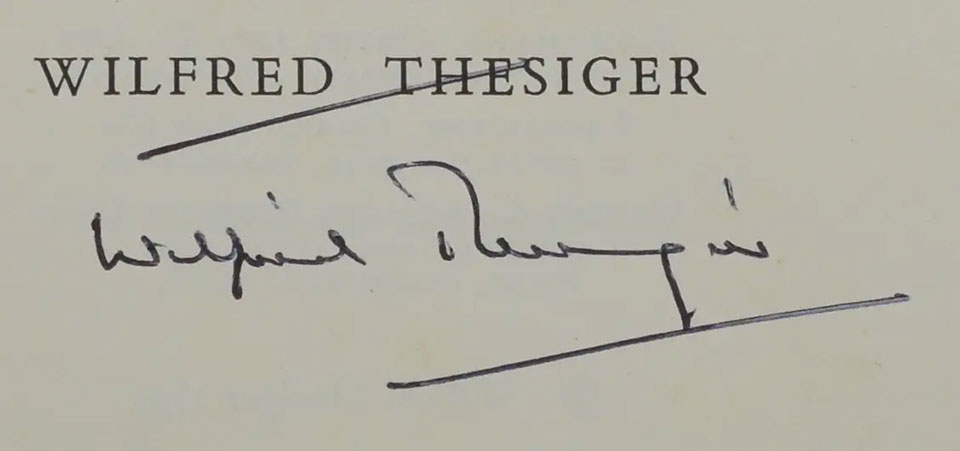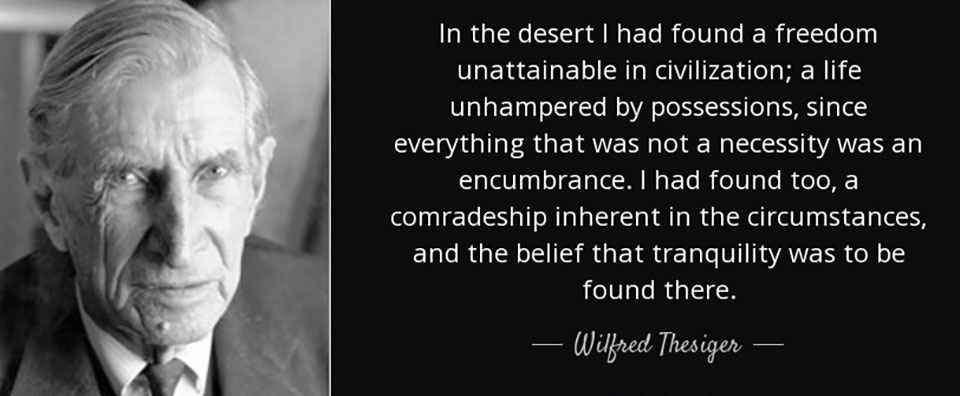The British Explorer and Travel Writer used a number of English classic-calibre rifles for hunting and protection during his travels, by traditional means of transport, in Ethiopia, Sudan, Arabia and Iraq from 1930-1958, writes Christopher Coates.
In his travel book “The Danakil Diary” Wilfred Thesiger described his journeys on foot in Abyssinia (later Ethiopia) between 1930 and 1934. In 1930 he attended the Coronation of Emperor Haile Selassie in Addis Ababa (where Thesiger was born at the British Legation in 1910). Afterwards, Emperor Haile Selassie presented Thesiger with the Order of the Star of Ethiopia.
Thesiger then arranged a four week hunting trip in the Interior. He had read Major Powell-Cotton’s 1902 book “A Sporting Trip through Abyssinia”. The two rifles Thesiger used for the hunting trip were a .318 Westley Richards bolt-action rifle (lent by his Godmother Mrs Olive Backhouse) and a .400 Jeffery Double Rifle (borrowed from Colonel Dan Sandford).
Having then graduated from Oxford University, where he was also Captain of the Oxford University Boxing Club and awarded a “Blue”, Thesiger returned back to Abyssinia in 1933-34 where he undertook two expeditions on foot into the hostile Danakil region to locate the source of the Awash River.
The two rifles he used, for food hunting and protection, were a .318 bolt-action rifle (lent by Lady Olive Archer) and a .450 3 ¼ inch N.E. John Rigby “Rising Bite” Sidelock Double Rifle. The .450 N.E. John Rigby rifle had originally been made in 1905 for Colonel P.B. Osborne, and later purchased in 1933 by Thesiger’s mother Kathleen for Wilfred.
In 1935 Thesiger joined the Sudan Political Service and lived in the remote Darfur and Nuer regions of Sudan until 1939. In his book “Arabian Sands” Thesiger records that he shot 70 cattle-killing Lions during his 5 years in Sudan. Thesiger had three John Rigby N.E. rifles in the Sudan.
In London he had bought a new custom-made .275 N.E. John Rigby bolt-action rifle. In 1934 his brother Brian Thesiger had bought him a .350 Rigby Magnum bolt-action rifle, which Thesiger used in Sudan to shoot Lions, together with his .450 N.E. John Rigby “Rising-Bite” Double Rifle that his Mother had bought him in 1933.
“I believe that most men have an inborn desire to hunt…..”
Wilfred Thesiger “The Life of my Choice”
At the outbreak of World War Two in 1939 Thesiger joined the Sudan Defence Force with the commissioned rank of Bimbashi. He later served with Lieutenant Colonel Orde Wingate in Abyssinia, with the S.O.E. in Syria, and the S.A.S. in the Western Desert of North Africa. He was awarded the Distinguished Service Order in 1941 for his leadership in the capture of the Italian fort at Agibar in Ethiopia and the surrender of the Italian fort garrison of 2,500 Italian troops.
In 1945 Thesiger joined the British Middle East Anti-Locust Unit and went to the Sultanate of Oman in Arabia. Between 1945 and 1950 Thesiger made two legendary crossings by foot and camel of the Rub al Khali desert in Arabia - the “Empty Quarter”. For both crossings he carried a .303 Sporting Model rifle. He issued his Bedouin guides with Service Rifles and a hundred rounds, and Muhamad al Auf had a .303 long-barrelled Martini rifle.
In 1951 Thesiger went to the marshes in Iraq where he spent the next 7 years. His book “The Marsh Arabs” is about his experiences there living with the Marsh Arabs between the Tigris River and the Euphrates River. Wild Boars in the Iraq marshes caused significant crop damage. Thesiger had 2 rifles in the Iraqi Marshes – both .275 Rigby N.E. bolt-action rifles.
For his service in Sudan before the Second World War Thesiger had bought a new .275 N.E. rifle from Rigby’s, and he later also bought in 1950 from Rigby’s in London a Used .275 John Rigby rifle. Thesiger found the .275 Rigby round to be very effective against Wild Boar. In 1954 Thesiger gave his Used .275 John Rigby rifle to Amara bin Thuqub who lived at Rufaiya in the Iraq marshes.
In 1954 Thesiger was awarded the Lawrence of Arabia Memorial Medal, by the Royal Central Asian Society, “for work and travel among the Arabs”. Thesiger’s autobiography “Life of my Choice” was published in 1980, when he was aged 70.
Thesiger’s .450 3 ¼ inch N.E. John Rigby “Rising Bite” Sidelock Double Rifle is still being shot; having later been converted to .470 N.E. He sold back to John Rigby his .350 Rigby Magnum bolt-action rifle (Rigby’s replaced the Stock). Amara bin Thuqub later sold the Used .275 Rigby rifle, given to him by Thesiger in 1954, for £140 (Thesiger said it was worth £12 in England).
Major Sir Wilfred Thesiger KBE DSO FRAS FRSL FRGS Hon FBA MA (Oxon) died in England in 2003 at the age of 93. His ashes are scattered on Stowe Hill, in the River Teme Valley, on the England and Wales border - near his family home “The Milebrook”.
Christopher Coates 2025
Sir Wilfred Thesiger - Obituary
Sir Wilfred Thesiger, who has died aged 93, spent most of his life roaming the most distant, desolate and inaccessible parts of the world. Seemingly armed with little more than an all-encompassing gaze, he travelled with the hardiest and most daring of regional tribesmen.
His subsequent writings bore witness to both the savagery and beauty of the places and people he met.
In 1909, Thesiger's father was appointed British minister in charge of the legation at Addis Ababa. Wilfred, his youngest son, was born in the Abyssinian capital the following year. The young Thesiger was soon entranced by the place, revelling in the sights and sounds of everyday life.
Above all, he was inspired by the dramatic return of the emperor's army in 1917, from one of the last great pitched battles between traditional African warriors.
"I believe that day implanted in me a life-long craving for barbaric splendour, for savagery and colour and the throb of drums,'' he said.
Following his family's return to England in 1919, Thesiger was educated at Eton and Oxford. Thesiger found the desert a natural home. Nevertheless, he found ''comradeship more easily among races other than his own" and, for most of his life, he had uneasy relationship with the western world.
From Oxford, Thesiger set out on the first of his many adventures in Africa. He joined the Sudan Political Service in 1934, and his first appointment was to the remote Kutum district where he lived in a thatched hut.
It was here that Thesiger fell in love with the desert. In his book, The Life of My Choice, he wrote: ''I was exhilarated by the sense of space, the silence.
"I felt in harmony with the past, travelling as men had travelled for untold generations across the desert.''
Meanwhile, Mussolini's invasion of Abyssinia in 1935 served only to strengthen his distrust of the western world. And, even in his 90s, he did nothing to mask his detestation for the forces of globalisation.
During World War II, Thesiger moved on to Cairo and Trans-Jordan with the Special Operations Executive. He fought with the newly established Special Air Service in North Africa, before leaving to become an advisor to Haile Selassie in Abyssinia.
The first of Thesiger's travelling tales
In joining the Desert Locusts Research Organisation, he undertook a deeply dangerous journey across the uninhabitable dunes of Arabia - leading to the book, Arabian Sands.
By this time, Thesiger, the colonial officer and soldier, had effectively been reborn as an explorer and author. He went on to record the lives of the remote peoples and places of Iraq, Persia, Kurdistan, Pakistan, Afghanistan and, more recently, Kenya.
He rode camels and, amongst others, mixed with a murderous tribe which determined a man's status by the number of men he had killed and castrated.
Wilfred Thesiger was one of the 20th century's greatest explorers, and his recollections influenced a generation of travel writers including Colin Thubron and Paul Theroux.
Ill health left him little choice but to spend his last years in a Britain that was largely alien to his desires.
Knighted in 1995, he would have preferred to stay where his heart lay, in the deserts of Africa or the hills of the Hindu Kush.
Published by the BBC 2003.
Published by Vintage Guns Ltd on

